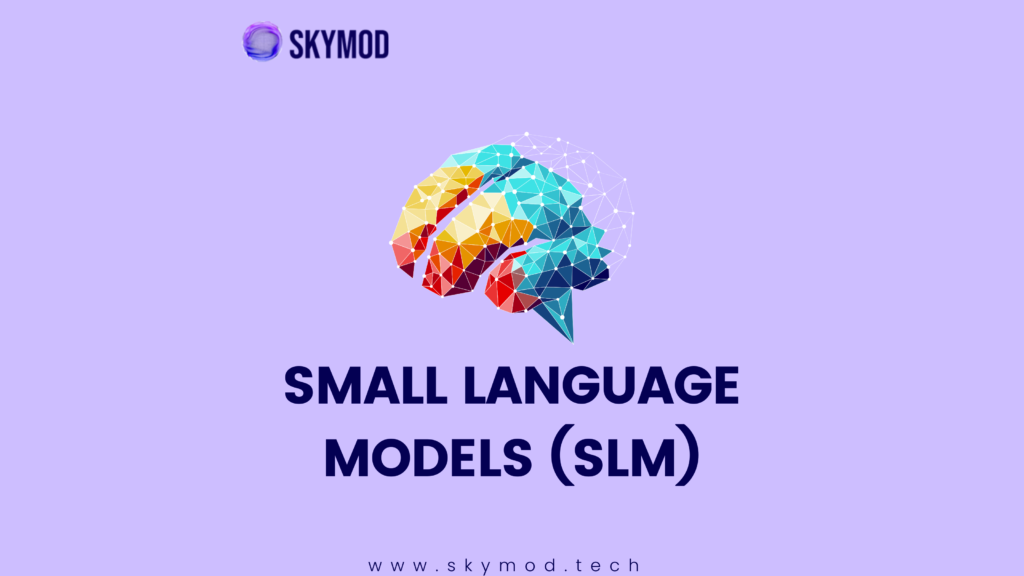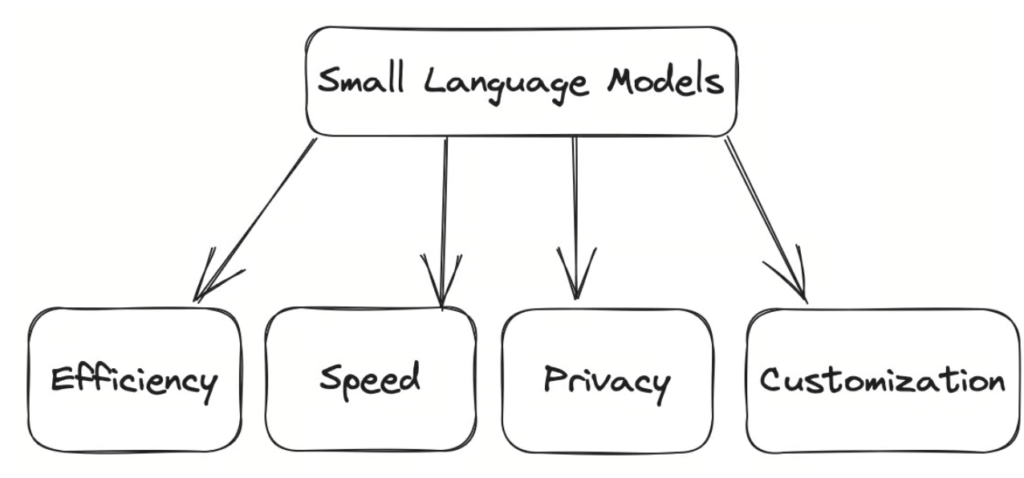Small Language Models: The Compact Powerhouses of AI
May 6, 2024
Gizem Argunşah

Large language models (LLMs) have captured headlines and imaginations with their impressive capabilities in natural language processing. However, their massive size and resource requirements have limited their accessibility and applicability. This is where small language models (SLMs) come into play – a compact and efficient alternative poised to democratize AI for a variety of needs.

Advantages of Small Language Models (SLMs)
What are Small Language Models?
SLMs are essentially smaller versions of their LLM counterparts. They typically have millions to a few billion parameters, compared to the tens or hundreds of billions in LLMs. This size difference translates into several advantages:
- Efficiency: SLMs require less computational power and memory, making them suitable for deployment on smaller devices or even in edge computing scenarios. This opens up opportunities for real-world applications like on-device chatbots and personalized mobile assistants.
- Accessibility: With lower resource requirements, SLMs become more accessible to a wider range of app developers and organizations. This democratizes AI and allows smaller teams and individual researchers to explore the power of language models without significant infrastructure investments.
- Customization: SLMs can be more easily fine-tuned for specific domains and tasks. This enables the creation of specialized models tailored to niche applications, resulting in higher performance and accuracy.
How Do Small Language Models Work?
Like LLMs, SLMs are trained on large datasets of text and code. However, to achieve their smaller size and efficiency, several techniques are employed:
- Knowledge Distillation: This involves transferring knowledge from a pre-trained LLM to a smaller model, capturing its core capabilities without the full complexity.
- Pruning and Quantization: These techniques remove unnecessary parts of the model and reduce the precision of its weights, respectively, further decreasing its size and resource requirements.
- Efficient Architectures: Researchers continue to develop innovative architectures specifically designed for SLMs, focusing on optimizing both performance and efficiency.
Advantages and Limitations
Small Language Models (SLMs) have the advantage of being trainable with relatively modest datasets. Their simplified architectures enhance interpretability, and their compact size facilitates deployment on mobile devices.
A prominent advantage of SLMs is their ability to process data locally, making them particularly valuable for Internet of Things (IoT) edge devices and organizations bound by strict privacy and security regulations.
However, deploying small language models involves a trade-off. As they are trained on smaller datasets, SLMs have more limited knowledge bases compared to their Large Language Model (LLM) counterparts. Additionally, their language and context understanding is generally more restricted, leading to less accurate and nuanced responses compared to larger models.
Table: Comparison of Large Language Models and Small Language Models
| Feature | Large Language Models (LLMs) | Small Language Models (SLMs) |
|---|---|---|
| Size | Large (billions of parameters) | Small (millions to a few billion parameters) |
| Resource Requirements | High computational power and memory | Low computational power and memory |
| Performance | Generally superior performance on a wide range of tasks | Good performance on specific tasks, but may struggle with complex or nuanced language |
| Accessibility | Less accessible due to high resource requirements | More accessible due to lower resource requirements |
| Customization | Can be fine-tuned, but requires significant resources | Easier to fine-tune for specific tasks |
| Applications | Suitable for a wide range of tasks, including translation, summarization, and question answering | Ideal for specific tasks and resource-constrained environments, such as on-device applications and edge computing |
Some Examples of SLMs:
- DistilBERT: DistilBERT represents a more compact, agile, and lightweight iteration of BERT, a pioneering model in the field of natural language processing (NLP).
- Orca 2: Developed by Microsoft, Orca 2 is the result of fine-tuning Meta’s Llama 2 using high-quality synthetic data. This innovative approach enables Microsoft to compete with or even surpass the performance levels of larger models, particularly in zero-shot reasoning tasks.
- Phi 2: Microsoft’s Phi 2 is a transformer-based Small Language Model (SLM) designed for efficiency and adaptability in both cloud and on-premises deployments. It exhibits high performance in areas such as mathematical reasoning, common sense, language understanding, and logical reasoning. Phi 2 is a versatile and resource-efficient tool capable of handling a variety of tasks.
- BERT Mini, Small, Medium, and Tiny: Google’s BERT model comes in scaled-down versions to accommodate resource constraints:
- Mini (4.4 million parameters)
- Small (unknown number of parameters)
- Medium (41 million parameters) These models are useful for various NLP tasks.
- GPT-Neo and GPT-J: GPT-Neo and GPT-J are scaled-down iterations of OpenAI’s GPT models. They offer versatility in application scenarios with more limited computational resources.
- MobileBERT: MobileBERT is specifically designed for mobile devices and optimizes performance within the constraints of mobile computing.
- T5-Small: Part of Google’s Text-To-Text Transfer Transformer (T5) model series, T5-Small strikes a balance between performance and resource utilization, aiming to provide efficient text processing capabilities.
The Future of Small Language Models (SLMs)
As research progresses, we can expect SLMs to become even more powerful and versatile. With improvements in training techniques, advancements in hardware, and efficient architectures, the gap between SLMs and LLMs will continue to narrow. This will undoubtedly open doors to new and exciting applications, further democratizing AI and increasing its impact across various fields.
Conclusion
In conclusion, small language models represent a significant shift in generative AI advancements. Their efficiency, accessibility, and customization capabilities make them a valuable tool for developers and researchers across various domains. As SLMs continue to evolve, they hold immense potential to empower individuals and organizations, shaping a future where AI is not only powerful but also adaptable and accessible to diverse needs.
